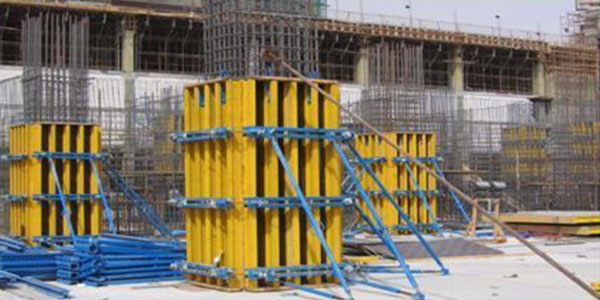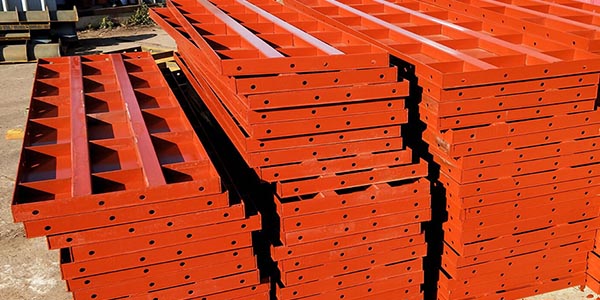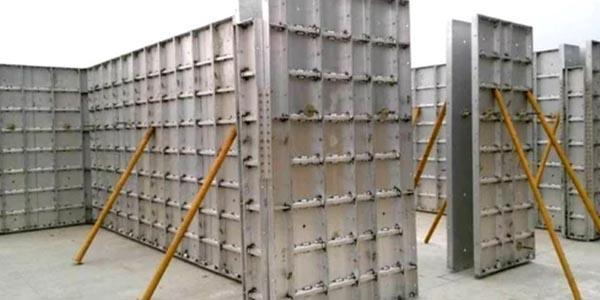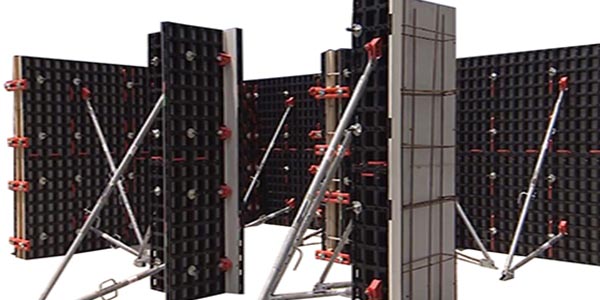A Complete Guide to Types of Column Formwork
Jan 09, 2025
Column forms are designed to hold the shape temporarily and support the purpose until it is set and hardened at that state. Hence, selecting the proper column formwork type will greatly affect your project schedule and cost. This guide sets forth the key types of column formwork and features to help you choose the right template for your project.

Timber column formwork is one of the oldest and most versatile types of formwork used for concrete columns.
Materials: Wood or Plywood
Pros:
Cons:

Steel column formwork with superior strength and durability, it’s ideal for large and repetitive projects.
Material: Prefabricated Steel Sheet
Advantages:
Disadvantages:

Aluminum column formwork combines durability with lightness for easy handling.
Material: Aluminum Sheet
Advantages:
Disadvantages:

Plastic and fiberglass column formwork systems are lightweight and corrosion resistant.
Material: Reinforced Plastic or Fiberglass
Advantages:
Disadvantages:
Designed for one-time use, Single-use column formwork is a cost-effective solution for simple projects.
Materials: Cardboard, plastic, a mixture of plastic and fiber reinforcements
Pros:
Cons:
The removable/re-usable column formwork system is designed for multiple uses, balancing cost-effectiveness and durability.
Material: Steel, Aluminum, or Plastic
Pros:
Cons:
The modular column formwork system provides flexible configurations for different column sizes and shapes.
Material: Steel, Aluminum, or Plastic
Pros:
Cons:
Beyond the primary material types, several specialized solutions cater to particular column needs:
Adjustable Column Clamps: These metal clamps are used in conjunction with timber or plywood formwork to quickly adjust column dimensions and secure the panels.
Circular Column Formwork: Designed specifically for round columns, these can be made from steel, fiberglass, or even disposable cardboard tubes (Sonotubes™) for single-use applications.
Permanent Formwork: In some cases, the formwork is designed to remain in place after the concrete cures, becoming an integral part of the column. Examples include pre-fabricated concrete units or fiber-reinforced plastic (FRP) tubes that act as both formwork and a protective/decorative layer.
There are many de-molding cycles and considerations for the different types of formwork systems used at construction sites. In general terms, the molding cycle can be defined as the time used while striking formwork, ensuring neither affects concrete's strength and quality adversely. Different formwork types and types of structures to be built give rise to different time ranges.
Considerations:
Columns are vertical structures in which hydration takes place very rapidly up to strength. Given that the early closure of formwork occurs once the concrete has reached the specified strength, usually around 50%, the period within which the forms may be closed will generally be sooner.
Considerations:
For slabs, waiting periods should be concrete-grade-dependent and slab-thickness-dependent. The times for removal should, however, be done keeping in mind that any spans up to, and over, 4.5 meters are taken into account.
Considerations:
The side forms of beams allow for quicker strikes, although the bottom formwork requires longer to stabilize the structure.
Considerations:
Wall formwork can be stripped relatively early, thus correspondingly early than columns, once it attains adequate strength.
With such a diverse range of options, making the right choice requires careful consideration of several factors:
In choosing column forms, due consideration must be given to the size, budget, and time of the project. Steel and aluminum forms are durable and reusable. Wood and disposable column shuttering are generally used for projects requiring short-term work. Modular and plastic forms promote ease, flexibility, and fast assembly. Nevertheless, careful consideration should be made in assessing a project to choose the form that achieves a proper mix of cost, efficiency, and quality.
Column formwork refers to temporary structures, which can create the outline of the concrete columns during construction. These forms hold the wet concrete in place until it sets and hardens sufficiently. They can be made with several different materials, with each offering its unique advantages to different projects.
The various types of column formwork include:
Wood Column Forms: the traditional cheap, and easily adjustable.
Steel Column Forms: very strong and corrosion-resistant, and usually used for larger projects.
Aluminum Column Forms: light, reusable, corrosion-resistant, for various types of construction.
Plastic and Fiberglass Columns: the right choice for fast-paced finish jobs or mainly, for projects done on smooth finishes.
Disposable Column Forms: made of cardboard or any similar material and disposed of after use; comparable with small one-time projects.
Removable/Reusable Column Forms: Reusable numerous times, often made of aluminum or metal.
Modular Column Forms: Prefabricated to accommodate easy alterations for shape and size, suited for intricate and massive-scale projects.
What is Column Formwork? ——eiffeltrading